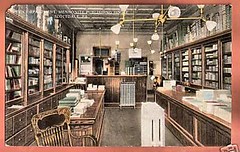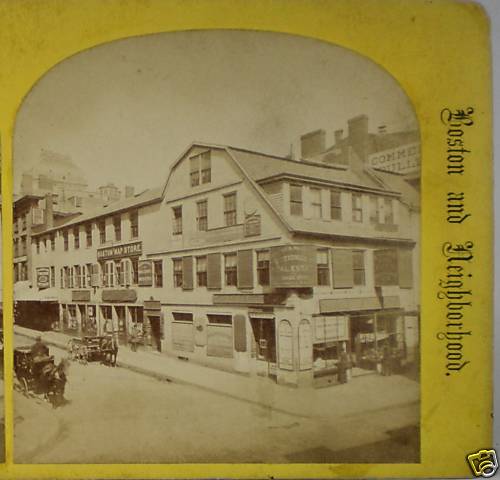
Visiting with Bibliophiles of Oklahoma member RB, I got the opportunity to look at some of his books. Incredible. Knowing my interest in book trade items, he pointed out a book label that was a little different than the norm. It looked familiar.
 I was fairly certain I had seen it on Seven Roads Book Trade Label Gallery. Not only is it a mouthful, but a tremendous resource for Book Trade historians.
I was fairly certain I had seen it on Seven Roads Book Trade Label Gallery. Not only is it a mouthful, but a tremendous resource for Book Trade historians.The label was one like the above. "Scientific and Medical Books, and all objects of Natural History. A.E. Foote, M. D. 1223 Belmont Ave., Philadelphia, Pa." I was thinking it looks ca. 1905, but an older company. It maintains the punctuation norms of earlier labels (and signs, and titles, etc.) but with a more "modern" styling, like Pa., instead of Penna. Then I found the Biographical Record of The Mineralogical Record, which answered my questions. Albert E. Foote was a Mineral dealer. Not just a mineral dealer, but THE mineral dealer in the US who also sold books. He even had a mineral display at the 1876 Centennial Expo in Philadelphia, which is very cool to a museum person. My museum hero, George Brown Goode, also happened to be there curating his first exhibit, for the Smithsonian no less. The website also says the AE Foote Co. changed names in 1900. Well there goes my date. At least I have a tentative end date of 1900.

Looking through the 22 mineral specimen labels they've collected from Foote, I found this label dated Feb. 1884. The lower half of it looked awful familiar. Placing the book label next to this specimen label they are nearly identical; probably printed by the same printer. Notice the second numeral 2 in the address is scrunched, the too small period after M in MD.
The entry includes the info that Foote moved out of the Belmont address in 1890. If the specimen label and the book labels were printed at about the same time, we can place this label to mid-1880s to 1890.
So, 1884-1890. That's a date I can live with. This entry will be recorded at the American Book Trade Index for future reference.

My friend and fellow collector is very interested in archeology texts before 1900. Given Foote's specialty, he surely offered many more archaeology books in his time. So, do you have any books with an AE Foote label? Does anyone have a book catalog from Foote? Inquiring minds want to know...















